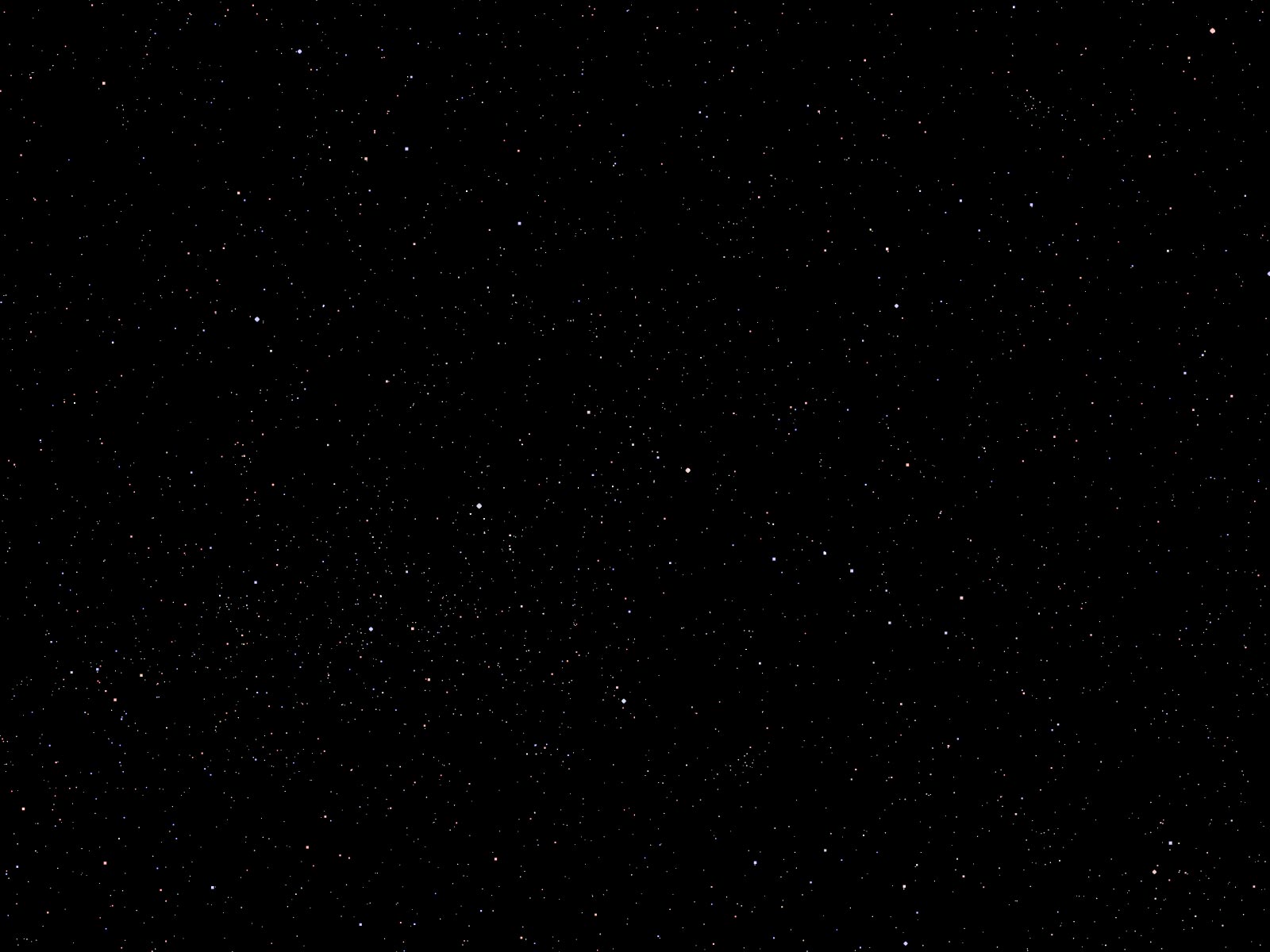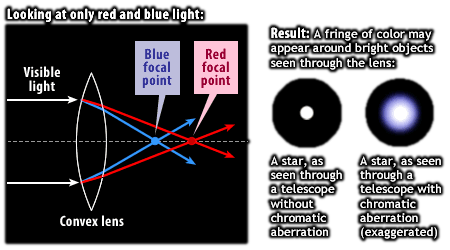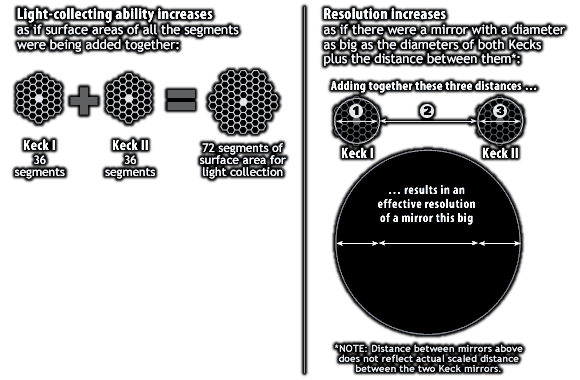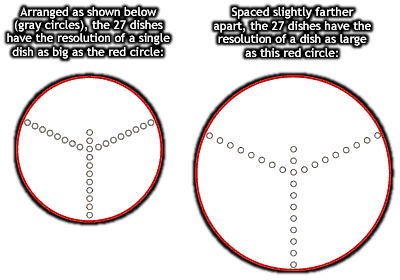


 U.Mars — Encyclopedia
U.Mars — Encyclopedia
Basic Astronomy and the Nighttime Sky
A refracting telescope uses lenses to focus light; a reflecting telescope uses mirrors.
|
|
|
Note that the mirrors in reflecting telescopes are curved and not straight mirrors — to gather the light to a point like the lenses in refracting telescopes.
 Modern refracting telescopes typically have specially-designed lenses, or multiple lenses, to reduce the effects of chromatic aberration. Recalling that the path of light is bent slightly as it passes through objects of varying densities (such as air versus glass, or even pockets of warm versus cool air), and that the degree of path bending varies by the light's wavelength (blue wavelengths are deflected to a greater degree than red), then one can see that a single conventional lens will result in a blurred image, due to the focusing points of the different wavelengths of light being spread out. Additional lenses or small mirrors may further direct the gathered light to the user's eyepiece, to a photographic plate, or to an electronic detector (charge-coupled device, or CCD — the kind of detectors used in digital cameras).
Modern refracting telescopes typically have specially-designed lenses, or multiple lenses, to reduce the effects of chromatic aberration. Recalling that the path of light is bent slightly as it passes through objects of varying densities (such as air versus glass, or even pockets of warm versus cool air), and that the degree of path bending varies by the light's wavelength (blue wavelengths are deflected to a greater degree than red), then one can see that a single conventional lens will result in a blurred image, due to the focusing points of the different wavelengths of light being spread out. Additional lenses or small mirrors may further direct the gathered light to the user's eyepiece, to a photographic plate, or to an electronic detector (charge-coupled device, or CCD — the kind of detectors used in digital cameras).
Note that the mirrors in reflecting telescopes are curved and not straight mirrors — to gather the light to a point like the lenses in refracting telescopes. A reflecting telescope also has (much smaller) secondary mirrors to re-direct the gathered light to the user's eyepiece or other detectors.
 Many of the largest (multi-meter-wide, about 10 m or more) modern telescopes, such as the Keck telescopes in Hawai'i, or the James Webb Space Telescope, use an array of smaller mirrors together to perform as a single larger mirror. The smaller mirror segments are easier to assemble, service, and manuever than a single very-large mirror would have been. Individual mirror segments' fine-tuned positioning can also be adjusted to compensate for atmospheric or other image distortion effects, improving seeing (see Limitations on Seeing).
Many of the largest (multi-meter-wide, about 10 m or more) modern telescopes, such as the Keck telescopes in Hawai'i, or the James Webb Space Telescope, use an array of smaller mirrors together to perform as a single larger mirror. The smaller mirror segments are easier to assemble, service, and manuever than a single very-large mirror would have been. Individual mirror segments' fine-tuned positioning can also be adjusted to compensate for atmospheric or other image distortion effects, improving seeing (see Limitations on Seeing).
 Somewhat similarly, an intereferometer is a network of smaller telescopes — often with spaces between them much larger than the physical size of any one individual telescope — targeting the same distant object, working in concert to perform in some ways as if they were a single large telescope (as large as the total of their size, including the space between them). The diagram at left shows how the Very Large Array (VLA) can change its effective diameter by physically moving (on tracks) the individual radio dishes farther apart.
Somewhat similarly, an intereferometer is a network of smaller telescopes — often with spaces between them much larger than the physical size of any one individual telescope — targeting the same distant object, working in concert to perform in some ways as if they were a single large telescope (as large as the total of their size, including the space between them). The diagram at left shows how the Very Large Array (VLA) can change its effective diameter by physically moving (on tracks) the individual radio dishes farther apart.
An interferometer can achieve massive gains in spatial resolution, as if it were a single detector as large as the full span between its most-distant members, but the intereferometer's light-gathering power is still limited to the light-gathering power of its component telescopes.
See also:
Thanks to:
Space Telescope Science Institute. (2005). Telescopes from the Ground Up. Retrieved January 12, 2014, from: http://amazing-space.stsci.edu/resources/explorations/groundup/